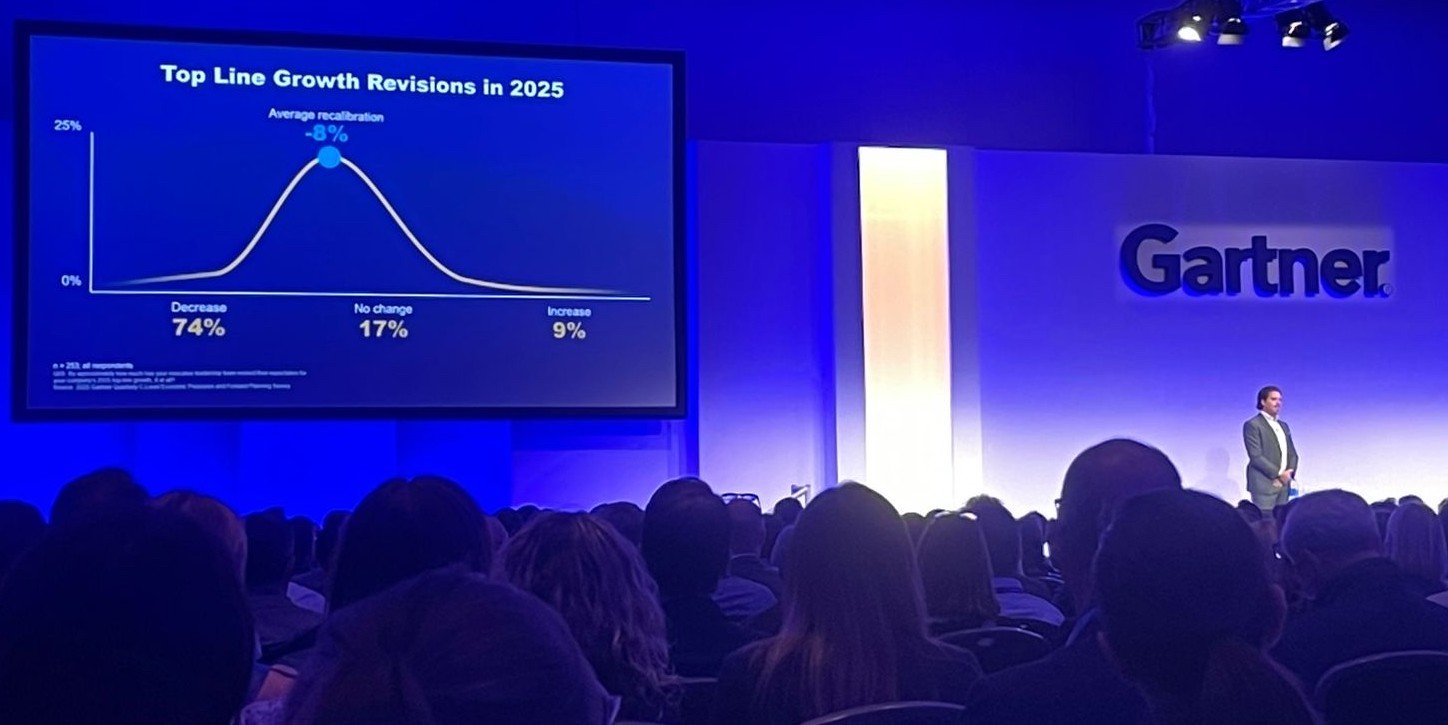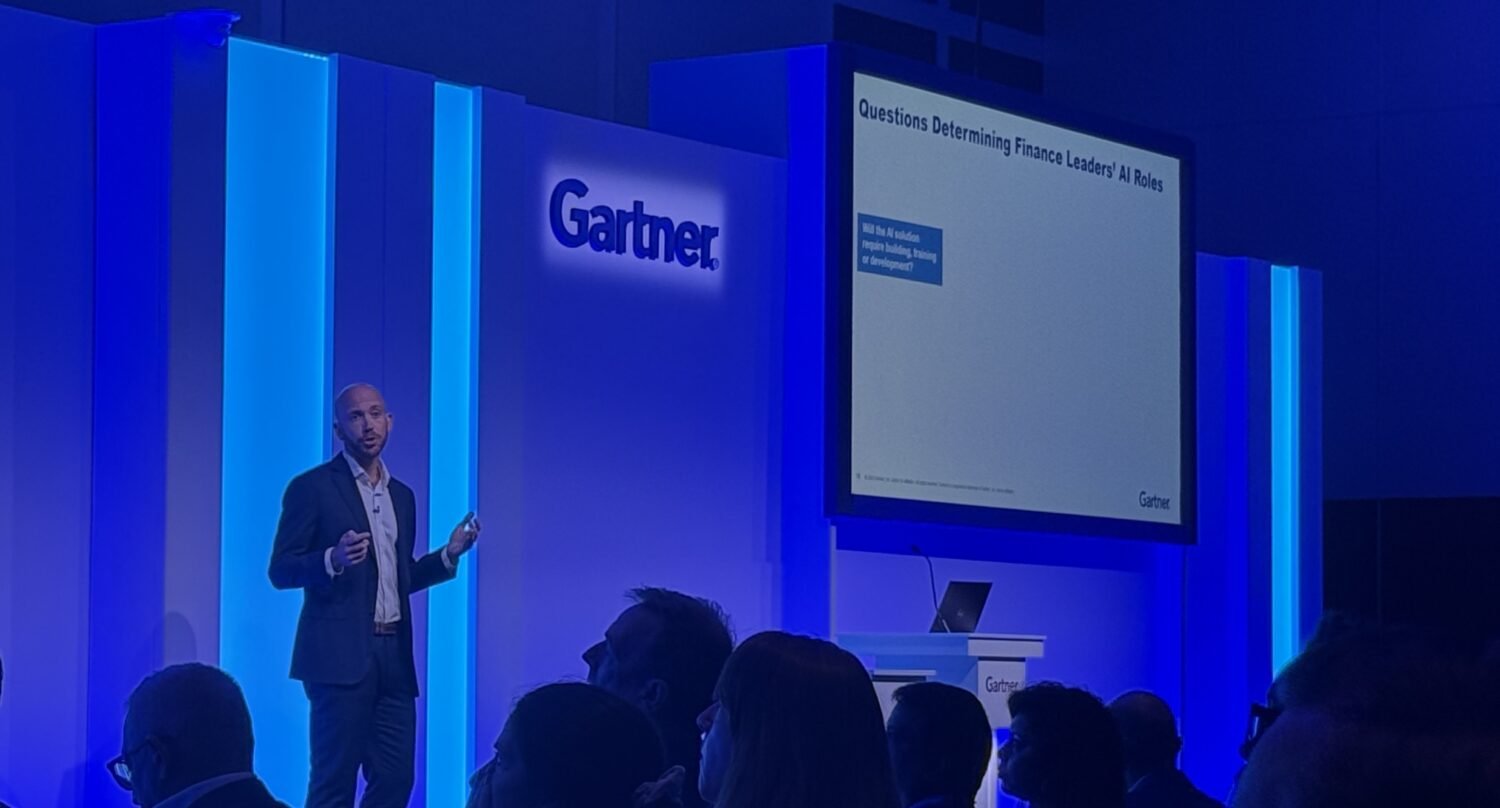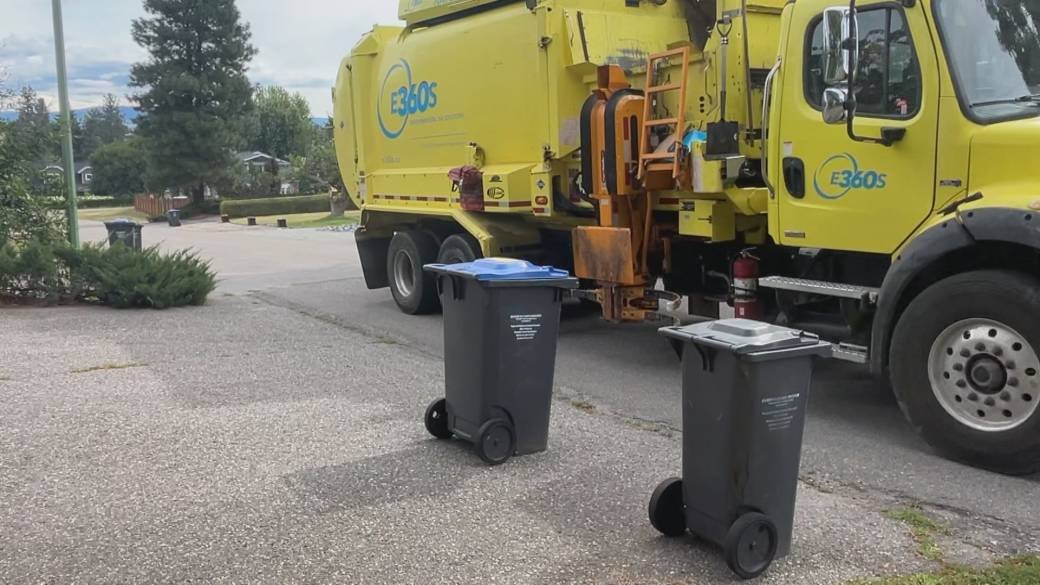Tools & Platforms
AI, identity, and the next phase for finance – Insights from Gartner’s CFO Conference

The first day of the Gartner CFO & Finance Executive Conference in London was a study in contrasts. On one hand, finance leaders are grappling with uncertainty, talent shortages, and the relentless hype around artificial intelligence. On the other, they are being urged to seize the moment, to move beyond guardianship and redefine finance as a catalyst for growth.
Across keynote sessions, panels, and conversations with technology providers, the message was clear: digital projects and automation alone will not transform finance.
A new identity is required, one that balances precision with agility, and control with empowerment.
Finance Needs a New Identity
The conference opened with a challenge from Gartner analysts Mallory Bulman and Clement Christensen: finance must stop treating digital projects as a collection of tactical fixes and instead reshape its very identity.
They laid out eight forces set to define finance through 2030, from the rise of do-it-yourself technology and AI-driven decision-making to the looming crash in finance talent. Matrixed organizations, regulatory flux, and the growing importance of human connection added to the picture of a function under strain.
Against this backdrop, Gartner argued for the rise of the “catalyst CFO.” These leaders, Bulman and Christensen said, distinguish themselves by adopting four habits: reframing how they talk about finance, embracing complexity, deploying business tools rather than more headcount, and focusing on products rather than processes.
The message resonated across the day: how finance leaders describe their teams shapes how those teams are seen, and whether they are viewed as cost centers or strategic drivers.
Leadership and AI Under the Microscope
Other Gartner sessions reinforced the same themes.
Dennis Gannon, VP Analyst at Gartner, pointed to worrying data on leadership in finance: fewer than half of employees are satisfied with management at their firms, and one in four are looking to leave. Promoting technical experts without equipping them for leadership, he warned, is a recipe for disengagement and attrition. His solution: develop “connector managers” who prioritize relationships, empathy, and adaptability alongside business acumen.

Marco Steecker, Senior Director of Research at Gartner, urged CFOs to take a deliberate role in shaping AI adoption. Whether as end-user advocates, co-developers, pioneers, or enterprise champions, CFOs need to start with business objectives and then align AI solutions.
Yet Gartner data shows fewer than 40% of finance leaders are even consulted on enterprise AI projects, a gap that risks leaving finance on the sidelines of critical decisions.
And in a session on digital storytelling, Christensen reminded attendees that numbers rarely move people on their own. Wrapping data in narratives and visual context, he argued, is essential if CFOs want their insights to drive decisions. Poor communication of financial information, Gartner estimates, costs companies up to 8% of EBITDA.

Conversations with Industry Leaders
If the keynotes set the strategic tone, the conversations on the sidelines brought the operational reality into focus.
Over the course of Day One, The CFO spoke with leaders from FloQast, BlackLine, Soldo, and other providers shaping the finance technology landscape.
FloQast: AI, Change Management, and the Close
For Hugh O’Neill, Chartered Accountant at FloQast, the conference floor was dominated by two themes: AI and change management.
“There’s a lot of talk about AI, what it actually does and how to use it,” he said. “But there’s also a big people element. How do we manage the transition? How do we evolve? It’s an evolution of the profession.”
O’Neill, who previously served as a finance director, said the draw of technology is its ability to free teams from spending endless hours fixing data and reconciling numbers. “Historically, finance has been about getting the numbers right, looking at the past. Technology allows us to move beyond that—to automate the mundane tasks and focus on critical thinking and faster decision-making.”
In his own session, The AI Challenge – Reimagining the Finance Function, O’Neill spoke about the pressure to shorten the close cycle. “If you have a 10-day close, you want five. If you have five, you want two. If you have two, you want zero,” he said.

AI, he argued, can take on transactional processes and allow humans to focus on strategic problems. The challenge is clarity: defining which processes to change, what success looks like, and preparing people for new roles.
“AI creates uncertainty, but it also creates possibility,” he said. “It’s about defining what can be automated and then guiding people toward what they should do next.”
Looking ahead, O’Neill believes finance teams will need to rebalance their skills mix.
“Today, maybe 80% of roles are traditional finance and 20% are systems-focused. That’s shifting toward 50/50,” he predicted. Leaders, he said, must guide their teams through that change while celebrating wins along the way.
BlackLine: Building Trust in AI
Few providers drew a bigger crowd than BlackLine. The company’s session was so oversubscribed that some CFOs sat cross-legged on the floor to listen. The draw, according to executives Philippe Omer-Decugis and Josh May, came down to one word: trust.
“AI is on everyone’s agenda, but 95% of projects don’t deliver ROI because of immaturity, whether in change management or use cases,” Omer-Decugis said. “CFOs are being asked to orchestrate transformation across the entire organization, while also cutting costs, managing risk, and upskilling people. What they want now is simple: cut through the noise and show me the use cases that deliver value today.”
BlackLine’s answer is Verity, a new platform whose name means “truth.” The system uses ERP data to validate journal entries at the source, which in turn improves transaction matching, reconciliation, and ultimately the accuracy of financial statements. “It’s like suddenly adding a team of analysts who never get sick and never miss things,” May said.
He pointed to intercompany accounting as a prime use case. Many global firms still struggle with inefficiencies that lead to large write-offs. “If you get the inputs right and validate them with AI, you can scale without endlessly adding headcount,” May said.
Beyond the technology, Omer-Decugis highlighted a broader shift in shared service centers. “Simply adding more people in low-cost markets is no longer enough. CFOs need technology layered into these models to meet productivity expectations,” he said.
Both executives stressed that CFOs must also partner closely with CIOs as they migrate ERP systems like SAP ECC to S/4HANA. “The best CFOs I meet have a clear understanding of architecture and digital transformation,” Omer-Decugis noted.
For BlackLine, trust is the differentiator. “When we publish something, it’s a solution, not just a slide,” Omer-Decugis said. “That’s why CFOs know they can trust us.”
Soldo: From Guardian to Catalyst
At Soldo, the focus is on giving finance leaders control of decentralized spending without becoming bottlenecks. Brandon Till, Head of Business Solutions, described the company’s platform as a way to handle “all the messy spend that doesn’t fit through central processes.” Employees can access money when needed, while finance maintains oversight through cards, a platform, and an app.
For Till, the Gartner keynote’s warning against a “guardian mindset” hit home. “Nine out of ten CFOs are getting it wrong by holding back too much,” he said. “The opposite should be true, finance needs to be a catalyst, enabling teams to seize opportunities. That’s where the successful businesses of the future will come from.”
He also flagged the looming retirement cliff in accounting. “Seventy-five percent of people in accounting are at or nearing retirement age. Finance teams need to speed up transformation to fill that gap,” he said. That means investing in automation, but also building workplaces that attract young talent.
“Young professionals don’t want to join teams stuck in outdated processes,” Till said. “They want to be part of finance teams that are strategic leaders, using modern tools.”
Internally, Soldo uses AI tools across functions, from one-off design purchases to enterprise-wide LLM licenses. Externally, the platform makes it easier for teams to adopt new technologies without lengthy procurement hurdles.
Looking forward, Till sees a clear shift in the CFO’s role. “Just as you get a laptop when you start a job, you should also get a company card,” he said. “Finance should never be a bottleneck. It should enable people to do their jobs quickly and well.”
Aibidia: Transfer Pricing as a Strategic Asset
Reuben Sagar, Chief Revenue Officer, and Maria Helander, VP of Product, discussed the findings of Aibidia’s 2025 State of Transfer Pricing report. With only 14% of firms making heavy use of structured transfer pricing data, Helander argued that CFOs must reframe compliance data as a value-generating asset.
Sagar highlighted the push toward audit readiness: “Rather than reacting, companies want to have data in place to understand why decisions were made.” Both executives said regulatory uncertainty—from OECD Pillar Two to tariffs—has pushed transfer pricing firmly onto the CFO agenda.
Esker: Agentic AI and the Expanding CFO Role
Eric Bussy, Chief Marketing Officer at Esker, said CFOs need visibility and agility in a volatile world. Esker’s Agentic AI Suite, which integrates both source-to-pay and order-to-cash, is designed to minimise silos and accelerate responsiveness.
“The time of the ERP is not compatible with the time of the organisation,” Bussy said. He described the CFO’s evolving position as a “strategic connector” across the C-suite and argued that real-time transparency—delivered in hours, not days—is now a baseline expectation.
Pigment: Analyst Agents and Digital Workforces
Edouard Beaucourt, Head of EMEA at Pigment, unveiled the company’s launch of three AI-powered agents—Analyst, Planner, and Modeler—during the event. Designed to accelerate replanning and scenario modelling, the agents form what he called a “digital workforce” that augments finance teams.
“The idea that AI will replace people is a misperception,” Beaucourt said. “It’s really about augmentation.” Pigment’s customers, including Vinci, Idex, Snowflake, and Carhartt, are already using AI assistants in production, with Beaucourt stressing that the priority is selecting the right technology, targeting processes with quick returns, and cultivating adaptable early adopters.
Serrala: Intelligent Working Capital as a Growth Lever
Rami Chahine, Chief Product & Technology Officer at Serrala, said CFOs must move beyond back-office routines to treat working capital as a lever for growth. By combining receivables, payables, and treasury into a single platform, Serrala enables real-time visibility.
“There’s a misconception that AI is a silver bullet,” Chahine said. “The reality is AI only works if the data is clean, integrated, and available in real time.” Customers are already seeing up to 40% of invoices processed touchlessly, freeing teams to focus on strategy.
insightsoftware: Precision, Not Guesswork
Shameek Bhushan, Senior Vice President at insightsoftware and Co-Founder of JustPerform, underlined that finance cannot operate on estimates. “Numbers are never wrong, and responses need to be precise,” he said. While AI can automate reconciliation and other repetitive tasks, Bhushan warned that humans must remain in the loop to validate outputs.
He positioned insightsoftware as one of the broadest office-of-finance platforms, spanning reporting, consolidations, and regulatory filings. Looking ahead, he said agentic workflows—specialised digital agents trained like employees—will be the next frontier.
Anaplan: Bridging Strategy and Execution
Piers Bradley, Senior Solution Consultant at Anaplan, described the company’s mission as “decision excellence.” He said CFOs face the dual challenge of setting long-term strategies while managing day-to-day execution. Anaplan’s AI roadmap spans predictive forecasting, generative conversational tools, and emerging agentic capabilities.
“It’s about removing blind spots and ensuring planners can correct course quickly,” Bradley said. He encouraged CFOs to engage directly with the technology through workshops and executive sessions, adding: “Planning technology is now fundamental to running a successful business.”
Themes Emerging
By the close of Day One, several themes had crystallized.
First, AI is unavoidable, but its success depends on precision, governance, and the ability to translate use cases into tangible outcomes. From FloQast’s focus on closing cycles to BlackLine’s emphasis on intercompany accounting and Soldo’s work on decentralized spend, the practical applications are beginning to outweigh the hype.
Second, identity and leadership matter as much as technology. Gartner’s call for finance to reframe itself as a catalyst, combined with warnings about weak people management, underscored that transformation is not just a technical project. It is a cultural one.
Third, the talent equation is becoming urgent. Whether it is FloQast predicting a 50/50 split between finance and systems skills, or Soldo warning of a retirement cliff, CFOs are acutely aware that automation alone cannot fill the gap. Attracting and retaining talent will require modern tools, new mindsets, and better leadership.
Finally, trust remains the ultimate currency. As BlackLine executives noted, CFOs want AI they can rely on. Without trust in the numbers, no amount of dashboards or models will suffice.

Closing Note
Day One of the Gartner CFO & Finance Executive Conference underscored both the pressure and the possibility facing finance leaders. AI, identity, and transformation dominated the agenda, but the real test lies in execution—how quickly CFOs can turn theory into practice while guiding their teams through change.
Day Two promises deeper dives into future-ready operations, more on agentic AI, and further perspectives from finance leaders on the front lines of transformation.
Stay tuned..
Was this article helpful?
YesNo
Tools & Platforms
Student Assembly Establishes Committee to Provide Recommendations on Technology, AI Policies

The Student Assembly voted to establish a Technology Committee during Thursday’s meeting, setting the stage for undergraduate involvement in University technology policy.
Resolution 5: Establishing The Technology Committee, passed unanimously at the Assembly meeting. The new committee is designed to address and advise on changing technology policies in the face of generative AI and other emerging technologies.
The committee will “provide recommendations on policies, programs, and initiatives,” and will “serve as the primary student voice on issues including digital tools … and policies concerning merging technologies such as generative AI,” according to the resolution.
Hayden Watkins ’28, the Assembly vice president for finance, was one of the sponsors of the resolution, which was designed to improve channels of communication with administration regarding technology.
“The [Technology Committee] will be a fantastic avenue for us students to communicate with administration and advise the Student Assembly on student perspectives on AI, hate speech on social media, and other issues relating to technology,” Watkins wrote in a statement sent to The Sun.
According to the resolution, the University has “historically relied on ad hoc student surveys and feedback mechanisms” to learn student perspectives, “but no formal or consistent channel exists for student input on University-wide technology governance decisions.”
While formal policy decisions relating to technology and its usage are done by University administrators, Student Assembly Bylaws state that the Assembly may create committees to “review all policies and programs … that create policy directly affecting student life.”
Membership of the committee will be selected by the Assembly and the IT Governance Liaison will serve as its chair.
In an email sent to students on August 28 from the Office of the Vice Provost for Undergraduate Education, the University acknowledged that while new technologies like generative artificial intelligence tools are “changing the educational landscape” and offer “incredible opportunities for learning,” they can also present various risks if used improperly.
However, the email did not establish a uniform AI policy, leaving specific policies up to individual professors in alignment with the existing Code of Academic Integrity and the undergraduate Essential Guide to Academic Integrity.
“Faculty will likely set different parameters around the appropriate use of generative AI in their courses,” the email read. “It is your responsibility to pay close attention to their course-specific guidelines.”
This approach mirrors peer institutions, which have been hesitant to issue bans on the use of generative AI, though schools including Columbia and Princeton have prohibited the use of AI for academics without instructor approval.
Read More
Tools & Platforms
AI tech identifies Central Okanagan properties and hazardous material in their bins – Okanagan
New technology that uses artificial intelligence (AI) may have homeowners in the Central Okanagan thinking twice about what they put into their curbside garbage and recycling bins.
Chad Evans is a recycling truck driver and says hazardous materials are ending up in the truck far too often.
“Every day,” he said. “Probably one in 10 bins.”
It’s hoped those numbers can be reduced with a new system being used across the Regional District of Central Okanagan (RDCO).
Called ‘Prairie Robotics’, the system involves mounted cameras that capture images of material going into the recycling trucks.
“As the bin is being emptied into the truck, that is when the hundreds or thousands of pictures are being taken and that’s getting sent back to our system,” said Brody Hawkins, district manager for Environmental 360 Solutions (E360s), the company contracted for curbside pickup by the RDCO.
“What that system does with those pictures is it uses AI to monitor all the contamination.”
The technology is then able to track the contaminated material back to the home involved.

Get daily National news
Get the day’s top news, political, economic, and current affairs headlines, delivered to your inbox once a day.
“We use the GPS coordinates of the garbage bin to identify the address,” said Hawkins.
The RDCO then sends an information postcard to that address.
The postcard is meant to act as a warning but one that could be followed by fines if the problem persists.
“They have an image of what the truck is seeing, so they can see exactly what they put in there that doesn’t belong and some more information,” said Cynthia Coates, supervisor of solid waste services for RDCO.

Some of the hazardous material that is still ending up in curbside bins too often range from corrosive, flammable, or poisonous items to less obvious things like batteries and battery operated devices, such as e-cigarettes, power tools, and smoking alarms.
According to Coates, propane tanks are also being discarded in the bins.
“I’m seeing notification of fires at both our landfill and in our trucks and in our recycling facilities more than ever,” Coates said. “So I think it’s becoming more prevalent than ever.”
In July, a fire erupted in the hopper of a recycling truck in Kelowna.
The driver was forced to dump the load in a nearby parking lot.
A metal fuel filter improperly placed in a recycling bin was the suspected cause.
Right now, four of the seven E360s recycling trucks are equipped with the new AI technology.
The new system will be installed in the remaining three in the coming weeks.

© 2025 Global News, a division of Corus Entertainment Inc.
Tools & Platforms
How Malawi is taking AI technology to small-scale farmers who don’t have smartphones

MULANJE, Malawi — Alex Maere survived the destruction of Cyclone Freddy when it tore through southern Malawi in 2023. His farm didn’t.
The 59-year-old saw decades of work disappear with the precious soil that the floods stripped from his small-scale farm in the foothills of Mount Mulanje.
He was used to producing a healthy 850 kilograms (1,870 pounds) of corn each season to support his three daughters and two sons. He salvaged just 8 kilograms (17 pounds) from the wreckage of Freddy.
“This is not a joke,” he said, remembering how his farm in the village of Sazola became a wasteland of sand and rocks.
Freddy jolted Maere into action. He decided he needed to change his age-old tactics if he was to survive.
He is now one of thousands of small-scale farmers in the southern African country using a generative AI chatbot designed by the non-profit Opportunity International for farming advice.
The Malawi government is backing the project, having seen the agriculture-dependent nation hit recently by a series of cyclones and an El Niño-induced drought. Malawi’s food crisis, which is largely down to the struggles of small-scale farmers, is a central issue for its national elections next week.
More than 80% of Malawi’s population of 21 million rely on agriculture for their livelihoods and the country has one of the highest poverty rates in the world, according to the World Bank.
The AI chatbot suggested Maere grow potatoes last year alongside his staple corn and cassava to adjust to his changed soil. He followed the instructions to the letter, he said, and cultivated half a soccer field’s worth of potatoes and made more than $800 in sales, turning around his and his children’s fortunes.
“I managed to pay for their school fees without worries,” he beamed.
Artificial intelligence has the potential to uplift agriculture in sub-Saharan Africa, where an estimated 33-50 million smallholder farms like Maere’s produce up to 70-80% of the food supply, according to the U.N.’s International Fund for Agricultural Development. Yet productivity in Africa — with the world’s fast-growing population to feed — is lagging behind despite vast tracts of arable land.
As AI’s use surges across the globe, so it is helping African farmers access new information to identify crop diseases, forecast drought, design fertilizers to boost yields, and even locate an affordable tractor. Private investment in agriculture-related tech in sub-Saharan Africa went from $10 million in 2014 to $600 million in 2022, according to the World Bank.
But not without challenges.
Africa has hundreds of languages for AI tools to learn. Even then, few farmers have smartphones and many can’t read. Electricity and internet service are patchy at best in rural areas, and often non-existent.
“One of the biggest challenges to sustainable AI use in African agriculture is accessibility,” said Daniel Mvalo, a Malawian technology specialist. “Many tools fail to account for language diversity, low literacy and poor digital infrastructure.”
The AI tool in Malawi tries to do that. The app is called Ulangizi, which means advisor in the country’s Chichewa language. It is WhatsApp-based and works in Chichewa and English. You can type or speak your question, and it replies with an audio or text response, said Richard Chongo, Opportunity International’s country director for Malawi.
“If you can’t read or write, you can take a picture of your crop disease and ask, ‘What is this?’ And the app will respond,” he said.
But to work in Malawi, AI still needs a human touch. For Maere’s area, that is the job of 33-year-old Patrick Napanja, a farmer support agent who brings a smartphone with the app for those who have no devices. Chongo calls him the “human in the loop.”
“I used to struggle to provide answers to some farming challenges, now I use the app,” said Napanja.
Farmer support agents like Napanja generally have around 150-200 farmers to help and try to visit them in village groups once a week. But sometimes, most of an hour-long meeting is taken up waiting for responses to load because of the area’s poor connectivity, he said. Other times, they have to trudge up nearby hills to get a signal.
They are the simple but stubborn obstacles millions face taking advantage of technology that others have at their fingertips.
For African farmers living on the edge of poverty, the impact of bad advice or AI “hallucinations” can be far more devastating than for those using it to organize their emails or put together a work presentation.
Mvalo, the tech specialist, warned that inaccurate AI advice like a chatbot misidentifying crop diseases could lead to action that ruins the crop as well as a struggling farmer’s livelihood.
“Trust in AI is fragile,” he said. “If it fails even once, many farmers may never try it again.”
The Malawian government has invested in Ulangizi and it is programmed to align with the agriculture ministry’s own official farming advice, making it more relevant for Malawians, said Webster Jassi, the agriculture extension methodologies officer at the ministry.
But he said Malawi faces challenges in getting the tool to enough communities to make an extensive difference. Those communities don’t just need smartphones, but also to be able to afford internet access.
For Malawi, the potential may be in combining AI with traditional collaboration among communities.
“Farmers who have access to the app are helping fellow farmers,” Jassi said, and that is improving productivity.
___
For more on Africa and development: https://apnews.com/hub/africa-pulse
The Associated Press receives financial support for global health and development coverage in Africa from the Gates Foundation. The AP is solely responsible for all content. Find AP’s standards for working with philanthropies, a list of supporters and funded coverage areas at AP.org.
-

 Business2 weeks ago
Business2 weeks agoThe Guardian view on Trump and the Fed: independence is no substitute for accountability | Editorial
-
Tools & Platforms1 month ago
Building Trust in Military AI Starts with Opening the Black Box – War on the Rocks
-

 Ethics & Policy2 months ago
Ethics & Policy2 months agoSDAIA Supports Saudi Arabia’s Leadership in Shaping Global AI Ethics, Policy, and Research – وكالة الأنباء السعودية
-

 Events & Conferences4 months ago
Events & Conferences4 months agoJourney to 1000 models: Scaling Instagram’s recommendation system
-

 Jobs & Careers2 months ago
Jobs & Careers2 months agoMumbai-based Perplexity Alternative Has 60k+ Users Without Funding
-

 Podcasts & Talks2 months ago
Podcasts & Talks2 months agoHappy 4th of July! 🎆 Made with Veo 3 in Gemini
-

 Education2 months ago
Education2 months agoVEX Robotics launches AI-powered classroom robotics system
-

 Education2 months ago
Education2 months agoMacron says UK and France have duty to tackle illegal migration ‘with humanity, solidarity and firmness’ – UK politics live | Politics
-

 Funding & Business2 months ago
Funding & Business2 months agoKayak and Expedia race to build AI travel agents that turn social posts into itineraries
-

 Podcasts & Talks2 months ago
Podcasts & Talks2 months agoOpenAI 🤝 @teamganassi



